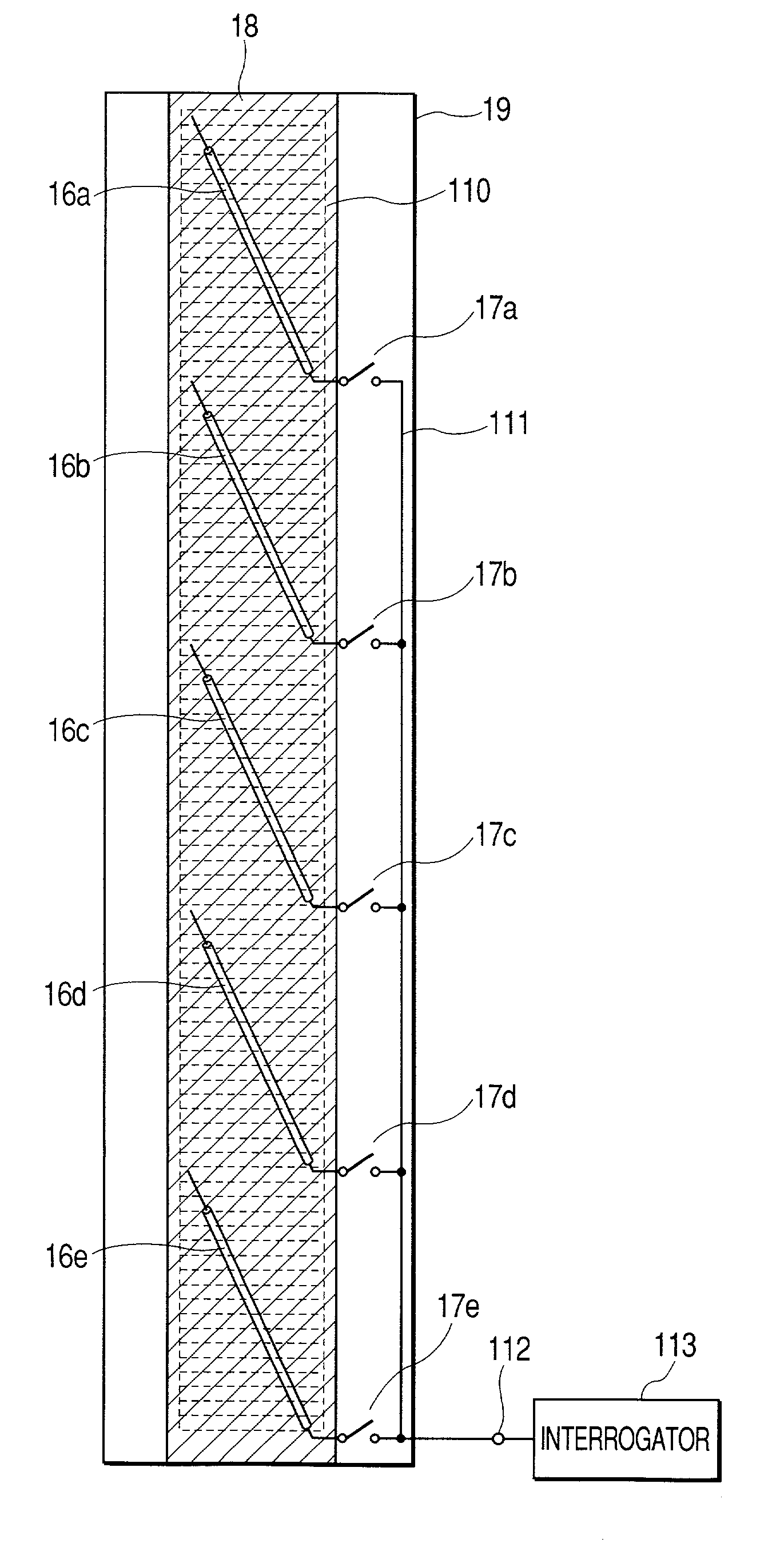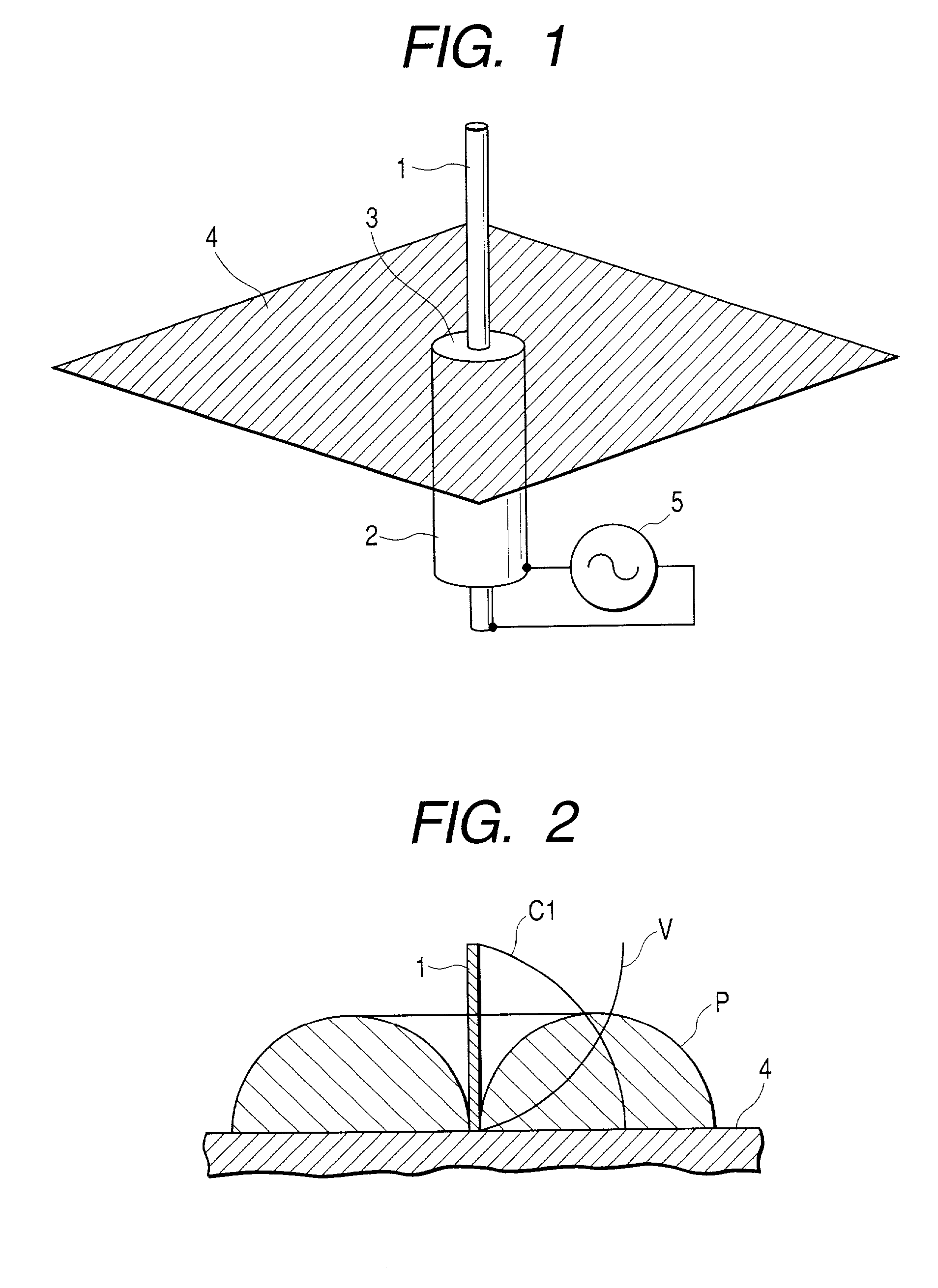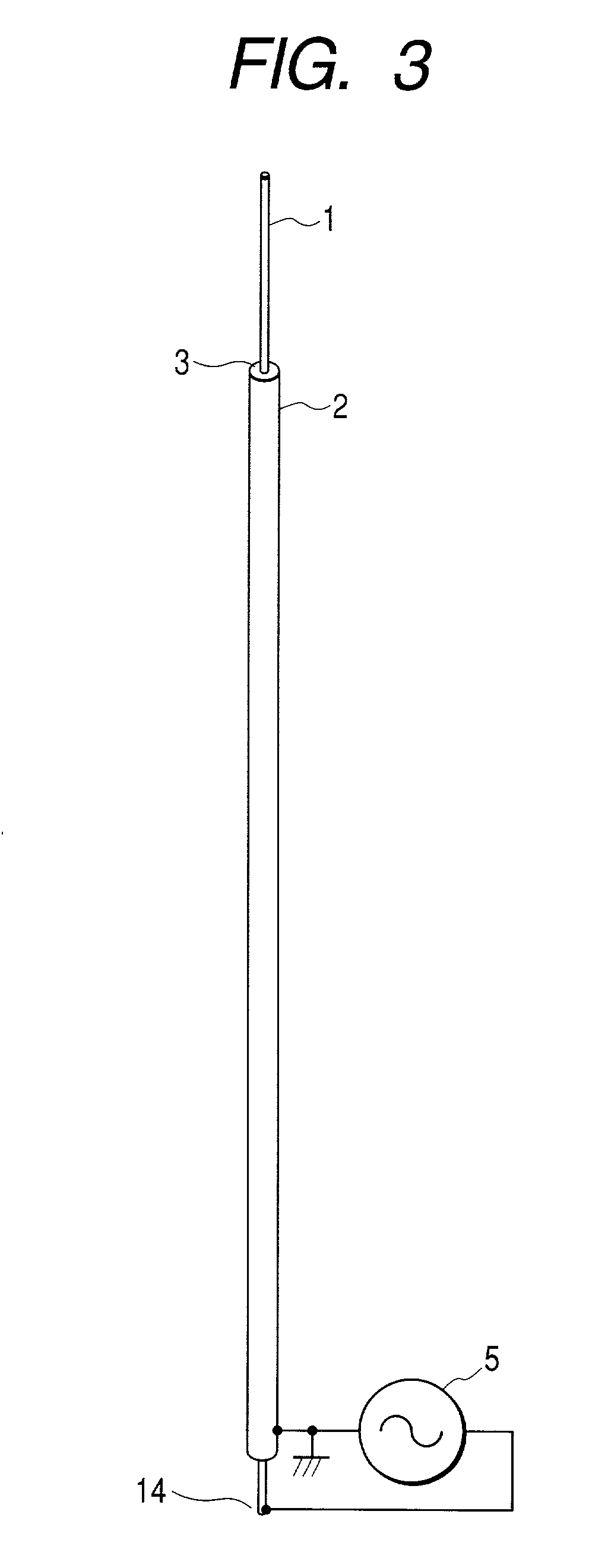Interrogator and goods management system adopting the same
a technology of interrogator and goods management system, applied in the field of interrogator, can solve the problems of deteriorating antenna characteristics, difficult to achieve the power that the transponder needs, and difficult to realize a uniform electromagnetic field over a wide range, so as to achieve the effect of increasing the electromagnetic energy supplied to the transponder and ensuring the electromagnetic energy over a wide area
- Summary
- Abstract
- Description
- Claims
- Application Information
AI Technical Summary
Benefits of technology
Problems solved by technology
Method used
Image
Examples
first embodiment
[0037]FIGS. 5(a) and 5(b) illustrate an interrogator as the invention, which includes plural sleeve antennas switched by selectors and plural transponders arrayed near each of the sleeve antennas, and manages multiple transponders as a whole. FIG. 5(a) is the plan view and FIG. 5(b) is the side view. In FIGS. 5(a) and 5(b), 16a–16e denote the sleeve antennas as shown in FIG. 3, 113 denotes an interrogator body, 111 an RF signal line that supplies the sleeve antennas 16a–16e with an RF signal from the interrogator body 113 through an input / output terminal 112, and 17a–17e denote RF signal selectors that switch the connections between each of the sleeve antennas and the RF signal line 111. Each of the sleeve antennas has the outer conductor grounded at the feed point. Further, 19 denotes a dielectric plate, and 18 a conductive plate (ground plane) stuck on the rear side of the dielectric plate 19. The above construction forms an interrogator antenna incorporated with the interrogator ...
second embodiment
[0047]The sleeve antennas 26a–26e in the second embodiment have the plane of vibration perpendicular to the plane of vibration of the rectangular transponder antennas. This configuration of the plane of vibration of the transponders being perpendicular to that of the sleeve antennas weakens the impedance coupling between the sleeve antennas and the transponder antennas, and decreases the power to be supplied. However, in reverse, the load is apt to be lessened each other, and thereby the optimization of the distance between them will realize an interrogator with the sleeve antennas capable of communicating multiple transponders.
third embodiment
[0048]FIGS. 7(a) and 7(b) illustrate an interrogator as the invention, in which the sleeve antennas are disposed to shorten the RF signal line for the power distribution. FIG. 7(a) and FIG. 7(b) are the plan view and the side view, respectively. To shorten the RF signal line is to decrease the loss of the RF signal generated.
[0049]In FIGS. 7(a) and 7(b), 36a–36e denote the sleeve antennas disposed with the orientations reversed each other, in parallel to the longitudinal direction of a dielectric plate 39. 311 denotes an RF signal line that feeds the RF signal to the antennas arranged in that manner, 312 an RF signal input / output terminal arranged virtually on the center of the RF signal line 311. The other configuration is the same as in the second embodiment. That is, the sleeve antennas 36a–36e, RF signal selectors 37a–37e, RF signal line 311, RF signal input / output terminal 312, and ground plane 38 configure an interrogator antenna, and a transponder group 310 is disposed very c...
PUM
 Login to View More
Login to View More Abstract
Description
Claims
Application Information
 Login to View More
Login to View More - R&D
- Intellectual Property
- Life Sciences
- Materials
- Tech Scout
- Unparalleled Data Quality
- Higher Quality Content
- 60% Fewer Hallucinations
Browse by: Latest US Patents, China's latest patents, Technical Efficacy Thesaurus, Application Domain, Technology Topic, Popular Technical Reports.
© 2025 PatSnap. All rights reserved.Legal|Privacy policy|Modern Slavery Act Transparency Statement|Sitemap|About US| Contact US: help@patsnap.com



